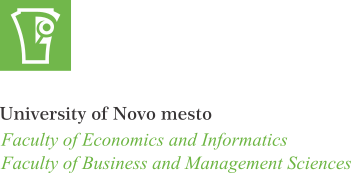Fostering Innovations through Authentic Leadership
Keywords:
innovations, creativity, authentic leadership, organizational changeAbstract
The modern world has become a small global village where the unpredictable situations and constant changes are demand of the day. High customer expectations, ever changing market situations and rapid innovative advancements, have compelled organizations to incessantly re-evaluate how they work and to adopt and implement changes in their business model in response of the changing trends. In such dynamic environment, leaders are challenged to find new ways to achieve lasting success, higher productivity and employee satisfaction. Modern leaders know that the full engagement of employees to the philosophy of the organization and the proper delegation of responsibilities will allow the organization to grow in the desired innovative direction. The intent of this paper is to examine the authentic management style that makes the organization promote the innovations as the main philosophy and core of its strategic development. By fostering the innovation process, a significant change of the typical company hierarchy might be observed, which further allows engagement and increased creativity of the employees, sustainable effectiveness and success of the organization in a long term perspective.
References
Amabile, T.M. (1996). Creativity in Context. Boulder: Westview Press.
Ancona, D.G. and Caldwell, D.F. (1993). Demography and design: predictors of new product team performance. Organization Science, Vol. 3, No. 3, pp. 321.
Atwater, L. and Carmeli, A. (2009). Leader-member exchange, feelings of energy, and involvement in creative work. The Leadership Quarterly, Vol. 20, No. 3, p. 264.
Bandura, A. (1986). Social Foundations of Thought and Action: A Social Cognitive Theory. NJ: Prentice Hall, Englewood Cliffs.
Drazin, R. et al. (1999). Multilevel theorizing about creativity in organizations: a sense making perspective. Academy of Management Review, Vol. 24, No. 2, p. 286.
George, B. et al. (2007). Discovering your authentic leadership, On Leadership. Harvard Business Review, February, pp. 163-177,
George, J.M. and Zhou, J. (2001). When openness to experience and conscientiousness are related to creative behaviour: an interactional approach. Journal of Applied Psychology, Vol. 86, No. 3, p. 513.
Gobbo, J.A. Jr and Olsson, A. (2010). The transformation between exploration and exploitation applied to inventors of packaging innovations. Technovation, Vol. 30, No. 5/6, p. 322.
Graen, G.B. and Scandura, T.A. (1987). Toward a psychology of dyadic organizing. In: Cummings, L.L. and Staw, B.M. (Eds). Research in Organizational Behavior, Vol. 9, JAI Press, Greenwich, CT, pp. 175-208.
Gumusluoglu, L. and Ilsev, A. (2009). Transformational leadership, creativity, and organizational innovation. Journal of Business Research, Vol. 62, No. 4, p. 461.
Hammond, M.M. et al. (2011). Predictors of individual level innovation at work: a meta-analysis. Psychology of Aesthetics, Creativity, and the Arts, Vol. 5, No. 1, pp. 90-105.
Hirst, G. et al. (2009). A social identity perspective on leadership and employee creativity. Journal of Organizational Behavior, Vol. 30, No. 7, p. 963.
Mathisen, G.E. (2011). Organizational antecedents of creative self-efficacy. Creativity and Innovation Management, Vol. 20, No. 3, p. 185.
Mumford, M.D. (2000). Managing creative people: strategies and tactics for innovation. Human Resource Management Review, Vol. 10, No. 3, p. 313.
Mumford, M.D. et al. (2002). Leading creative people: orchestrating expertise and relationships. The Leadership Quarterly, Vol. 13, No. 6, p. 705.
Aramburu, N. et al. (2006). Fostering innovation and knowledge creation: the role of management context. Journal of Knowledge Management, Vol. 10, No. 3, pp.157 – 168.
Nonaka, I. (1991). The knowledge-creating company. Harvard Business Review, Vol. 69, No. 6, pp. 96-104.
Nonaka, I. and Takeuchi, H. (1995). The Knowledge-Creating Company. Oxford: Oxford University Press.
Nonaka, I. et al. (2003). A theory of organizational knowledge creation: understanding the dynamic process of creating knowledge. In: Dierkes, M. et al. (Eds), Handbook of Organizational Learning & Knowledge, Oxford: Oxford University Press.
Oldham, G.R. and Cummings, A. (1996). Employee creativity: personal and contextual factors at work. Academy of Management Journal, Vol. 39, No. 3, p. 607.
Scott, S.G. and Bruce, R.A. (1994). Determinants of innovative behavior: a path model of individual innovation in the workplace. Academy of Management Journal, Vol. 37, No. 3, pp. 580-607.
Shalley, C.E. and Perry-Smith, J.E. (2001). Effects of social–psychological factors on creative performance: the role of informational and controlling expected evaluation and modelling experience. Organizational Behavior and Human Decision Processes, Vol. 84, No. 1, pp. 1-22.
Shalley, C.E. et al. (2004). The effects of personal and contextual characteristics on creativity: where should we go from here. Journal of Management, Vol. 30, No. 6, p. 933.
Shin, S. and Zhou, J. (2003). Transformational leadership, conservation, and creativity: evidence from Korea. Academy of Management Journal, Vol. 46, No. 6, p. 703.
Tierney, P. and Farmer, S.M. (2011). Creative self-efficacy development and creative performance over time. Journal of Applied Psychology, Vol. 96, No. 2, p. 277.
Torrance, E.P. (1969). Creativity. San Rafael: Dimensions Publishing.
Wang, C.L. and Ahmed, P.K. (2003). Organizational learning: a critical review. The Learning Organization, Vol. 10, No. 1, pp. 8-17.
Wang, G. et al. (2011). Transformational leadership and performance across criteria and levels: a meta-analytic review of 25 years of research. Group & Organization Management, Vol. 36, No. 2, p. 223.
Zhang, X.M. and Bartol, K.M. (2010). Linking empowering leadership and employee creativity: the influence of psychological empowerment, intrinsic motivation, and creative process engagement. Academy of Management Journal, Vol. 53, No. 1, p. 107.
Downloads
Published
How to Cite
Issue
Section
License
Copyright (c) 2022 Journal of Economic and Business Sciences

This work is licensed under a Creative Commons Attribution 4.0 International License.




